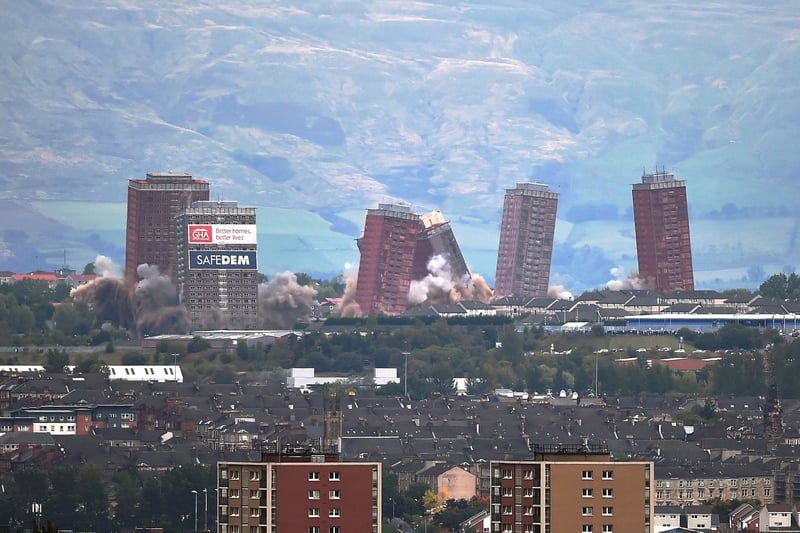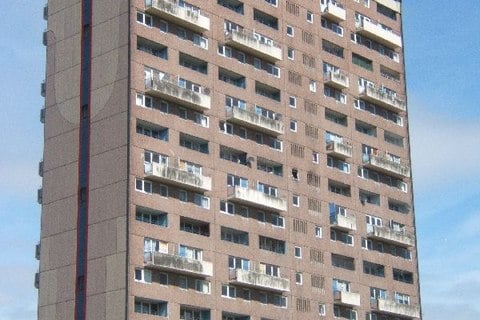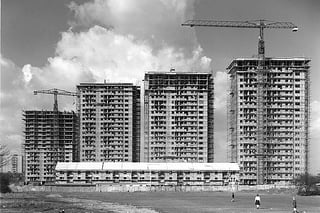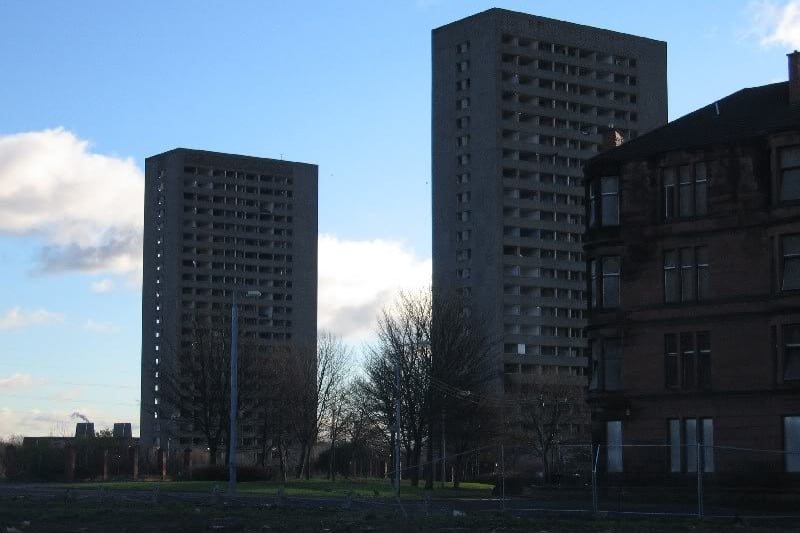Towers. High Flats. High rise housing. Three different names for the same type of building - they once dominated the skyline of Glasgow
The high flats of Glasgow were built primarily in the 60’s to accomodate the population of Glasgow which were in the process of being cleared out from slum housing and degraded tenements. Conditions within now-aging tenement buildings were in some areas horrific, with no access to indoor toilets, massive issues with vermin, and general overpopulation.
Industrial Glasgow had brought soon-to-be Glaswegians in their hundreds of thousands to the city to work on the River Clyde - and the inner-city was bursting at the seams. It was at this point that Glasgow Corporation (the progenitor to Glasgow City Council) decided something had to be done - and marked 29 inner-city slum areas for development.
Areas included for the plans for the slum clearances and redevelopment of people included but were not limited to Govan, Partick, Springburn, Anderston, Kingston and Townshead - with many of their populations dropping by as much as half.
But where did all these people go? Various places, many moved overtime as job opportunities gradually diminished with the deindustrialisation of Glasgow post-war, as the need for shipbuilding diminished, and then was increasingly outsourced. But as the old housing was torn down, Glasgow Corporation needed a quick and efficient means of housing the now houseless Glaswegians.
Enter tower blocks. The first of which was an experimental design into high-rise homes built in 1954: Moss Heights in Cardonald. The three ten-storey towers proved incredibly popular, and set the template for the next 240 tower blocks the city would build from 1955 to 1975.
Tower living was seen as the way of the future, not just by the council, but by an optimistic Glaswegian population who welcomed the idea and were eager to metaphorically and literally ‘rise above’ their forming low-rise living conditions.
Each flat in the tower came fully kitted out - kitchenette, an interior bathroom with running water, living room, and even more than one bedroom - a massive improvement to what many working class Glaswegians were used to. Central heating was unheard of for many of the inner-city kids - making the towers incredibly popular when they were first built.
The gradual process of the slum clearances took place from 1957 to 1975 - a period of 18 years - and drastically changed the face and living condition in just a generation as towering brutalist monoliths rose from the ashes of low-rise sandstone tenements.
Alongside the towers, many Glaswegians made the decision to move to ‘overspill’ new towns in West Scotland (East Kilbride and Cumbernauld) - others made the decision to move further afield into North Lanarkshire and even to the Lothians - particularly to the exciting new town of Livingston. The population of Glasgow in the 50’s stood well over one million - by 1974 there were just over 800,000 - for reference, the current population is 600,000.
The towers were far from perfect though - overly optomistic in the living of the future idea, the towers became taller and more densely packed - and resources around the towers like GPs, employment, and other social needs became strained.
Towers like the Red Road Flats were built with huge amounts of abestos as a flame-retardent material for the structurally integral steel-frames in case of a fire - the Glasgow Corporation architect Sam Bunton defended the use of the material in the 1966 International Asbestos Cement Review, stating:“steel and asbestos in partnership with social others operate as the collective that stabilises Red Road and holds it together, albeit provisionally, as a viable, safe housing solution”.
As it turned out, about 20 years later, asbestos isn’t that good for you - and they weren’t able to remove the asbestos until the flats were razed to the ground in 2013.
The issues around the towers were small at first, but gradually grew and grew, eventually coming to a breaking point in the 80’s under Margaret Thatcher - who oversaw the privitisation of much of Britain and the loss of industry in Glasgow.
Crime and ‘anti-social behavior’ became much more common, and in the crowded floors and streets around the towers, Police struggled to combat any of the issues rooted in unemployment, lack of opportunity, and in many cases mental health.
While this was happening all across the city, the densely populated towers got the worst reputation, and eventually became undesirable as tenants became reluctant to move into the high flats which were once so popular amongst the Glaswegians.
Couple this with a changing attitude towards living conditions and a growing desire to own your own home with a ‘front and back door’ - which was spurred by the Thatcher government’s ‘right to buy’ scheme.
The first of the towers began to be pulled down in the 90’s, with some of the towers lasting only around 30 years from construction to demolition. Some of the demolitions almost seemed like macabre celebrations, like when Glasgow City Council scheduled the demolition of the Red Road Flats alongside the 2013 Commonwealth Games.
The tides had turned on tower living, but this is not to say they’re not worth saving. Many of these towers built strong communities, despite their poor reputation in the eyes of the public and the council, and irreversibly changed Glaswegian culture - you only need to listen to The Jeely Piece Song to understand that.
Now Glasgow’s skyline is a lot more sparse without our towers - but some still hold on, though many of the remaining few will be demolished within the decade. One group, the Wyndford Residents Union, are in the process of staging a fight to save their towers in Maryhill, a process that worked for the Pinkston high flats in Sighthill - you can read more about their struggle here.
Take a look below for a gallery of the most prominent Glasgow towers now missing from the sky.

1. Red Road Flats
The last remaining Red Road flats were demolished in a controlled explosion on October 11, 2015 in Glasgow, Scotland. They were notable as they were only block in the scheme to be clad in red - constructed in 1966, the Red Road Flats got a reputation for anti-social behaviour. Leading to Glasgow City Council approving the demolition of all towers on the Red Road in Balornock, Greater Springburn.

2. Shawbridge Corridor
Nine towers once stood in Pollokshaws, standing out amongst the Southside’s skyline and marking Pollokshaws place in the city. Dubbed the Shawbridge Corrider, the high and low-rise blocks were part of a redevelopment plan in post-war Glasgow to help move families from the slums in areas of the city like the Gorbals. As of 2023, all but one of the towers have been razed, 33 Cartcraigs Road is the last-standing high flat in Pollokshaws. Pictured here is 12 Riverford Road.

3. Tarfside Oval
The Tarfside Oval were another group of Southside blocks in Mosspark - they look identical to the Ibroxholm Oval high flats just a few miles down the road. Built in 1969, the towers had over 400 flats and maisonettes between them - they were demolished in 2015.

4. Millerfield High Flats
Millerfield was a scheme of high rise flats in Dalmarnock - a total of 16 towers could be found there prior to 2007, when the last of the towers, 4 Millerfield Place was razed to make way for the Athletes Village for the 2014 Commonwealth Games.
